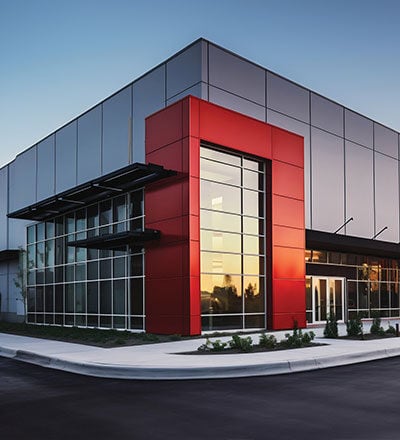Direct Private Money Lender
Fix-and-Flip Loans
Commercial Bridge Loans
Private Line of Credit
Bridge to Permanent Loans
Cash-Out Refinance Loans
Cannabis Property Loans
Rehab Loans
Turbo Close® Loans
Finance your next real estate project with flexible private money loans from professional hard loan lenders.

Metrics of Success
Real Financing Results for Borrowers, Brokers, and Investors Alike
$1B+
$1M
1-Day
1K+

Who We Are
We're not your traditional hard money lender.
We're well-recognized as a great hard money lender because hard money loans are all we do. Since 2007, we've partnered with borrowers and investors to turn their real estate aspirations into a reality.
We're not like your conventional lenders with strict parameters, slow turnarounds, and unnecessary hoops to jump through. We are the premier hard money lender and have built our reputation through consistent performance, reliable service, and fast delivery. The majority of our transactions close within 15 days and in as little as 5 days of the loan application being completed, helping our clients either make money or save money.
Turbo Close®
Under a tight timeline? Fund your next residential or commercial real estate project in 5 days or less.
Commercial Bridge Loans
Rehabilitate or pay off maturing notes on your commercial properties quickly.
Fix-and-Flip Loans
Flip or invest in your next residential property with loan approvals 6-12 months from initial purchase.
Cash-Out Refinance Loans
Break beyond the limits of conventional lending. We prioritize equity over borrower financials.
Bridge to Permanent Loans
Bridge the gap between short-term and long-term financing for commercial, residential, or industrial properties.
Private Line of Credit
Get fast, flexible financing at competitive rates. Only pay interest on the amount you draw.
Cannabis Property Loans
Receive expert guidance in commercial cannabis real estate as the industry evolves.
Rehab Loans
Purchase or rehab your next proeprty with the financial edge you need to succeed in this dynamic market.
Who We Serve
Access hard money lending you can trust.


Borrowers
Get the cash you need for hard money, private money, or bridge loans within 10 days or less in loan amounts of $100K-$20M.
Explore Lending Options for BorrowersBrokers
Secure hard money lending for residential and commercial real estate projects when traditional financing is not an option.
Explore Lending Options for BrokersInvestors
Diversify your portfolio and mitigate risk to maximize the rate of return on your next investment.
Explore Investment Opportunities
What Sets Us Apart
We provide custom lending options that conventional banks can't.
Flexible Terms
We work with foreign investors, ITIN borrowers, trusts, LLCs, and IRAs under flexible term agreements. No income, financials, or credit minimums are required.
Fast Turnaround
Assorted Property Types
We specialize in providing quick and flexible loans for conventional property types while also catering to unique situations and special use properties including vacant buildings, cannabis use, or other unqualified real estate.
Featured in ...

Our Approach
We'll work together to align your lending options with your real estate needs.

Discover your hard money lending options.
Discuss your financing goals with our seasoned loan officers. Learn more about our loan options according to property type, loan amount, and term.
Structure your loan based on our flexible terms.
Assess which loan type best suits your needs, and tailor your lending based on your project's timeline and total cost.
Enjoy a simplified approval process.
Meet with our team to apply for your loan without the hidden fees or red tape. We're here with you at every stage, from discovery through loan approval and beyond.
What Our Customers Are Saying
"The amazing team at Socotra Capital gives you all the help you need along the way. Big thanks to Xavier, Cory, and Tami for their time and patience. I strongly recommend this group for a quick close all the way through!"
Kamal Almutarreb
Borrower

"In the world of commercial real estate, having a trusted partner who can provide guidance and support throughout the transaction process can make all the difference. We will definitely look forward to engaging with Socotra Capital on future transactions."
Lenard Vaughn
Borrower

"Socotra Capital financed one of the commercial properties we acquired. Loan was approved in less than two weeks, and escrow was closed less than three weeks after signing Sale and Purchase agreement. Everyone at Socotra was professional and diligent."
Anonymous
Borrower

"The team at Socotra understands that time is of the essence in real estate transactions. They will not bog you down in weeks (months?) of due diligence, reviews, and endless documentation. If speed and certainty of close is important to you, then Socotra Capital should be your lender."
Andrew Kotowicz
Borrower

"Beyond the outstanding rates of return we’ve experienced, the team of Socotra professionals adheres to a strict and consistent investment philosophy that reduces variability compared to other hard money investment companies. Their communication with customers is amazing. They take time to really educate their investors."
Tom Taylor
Investor

Resources
Read our hard money insights.






Ready to explore your loan options?
Speak with our team today to learn more about the hard money lending opportunities that are right for you.
